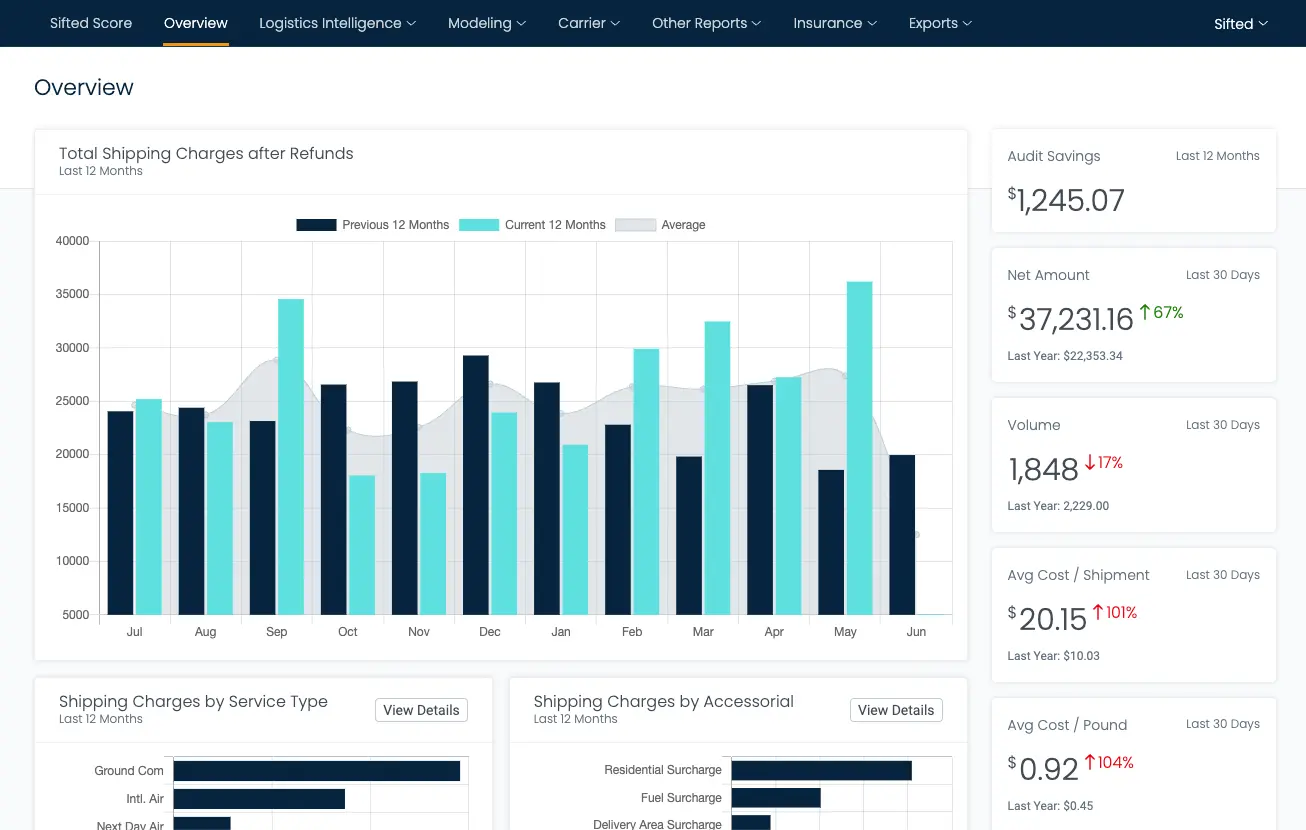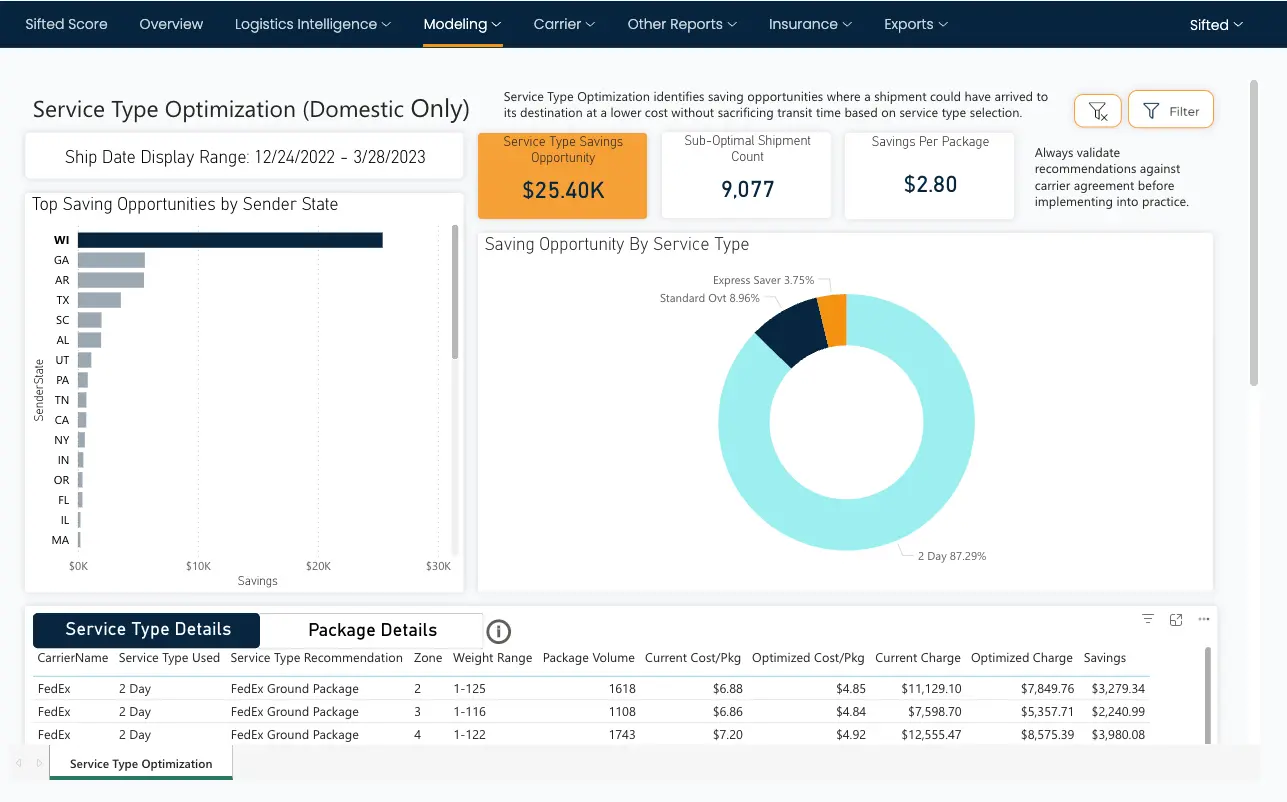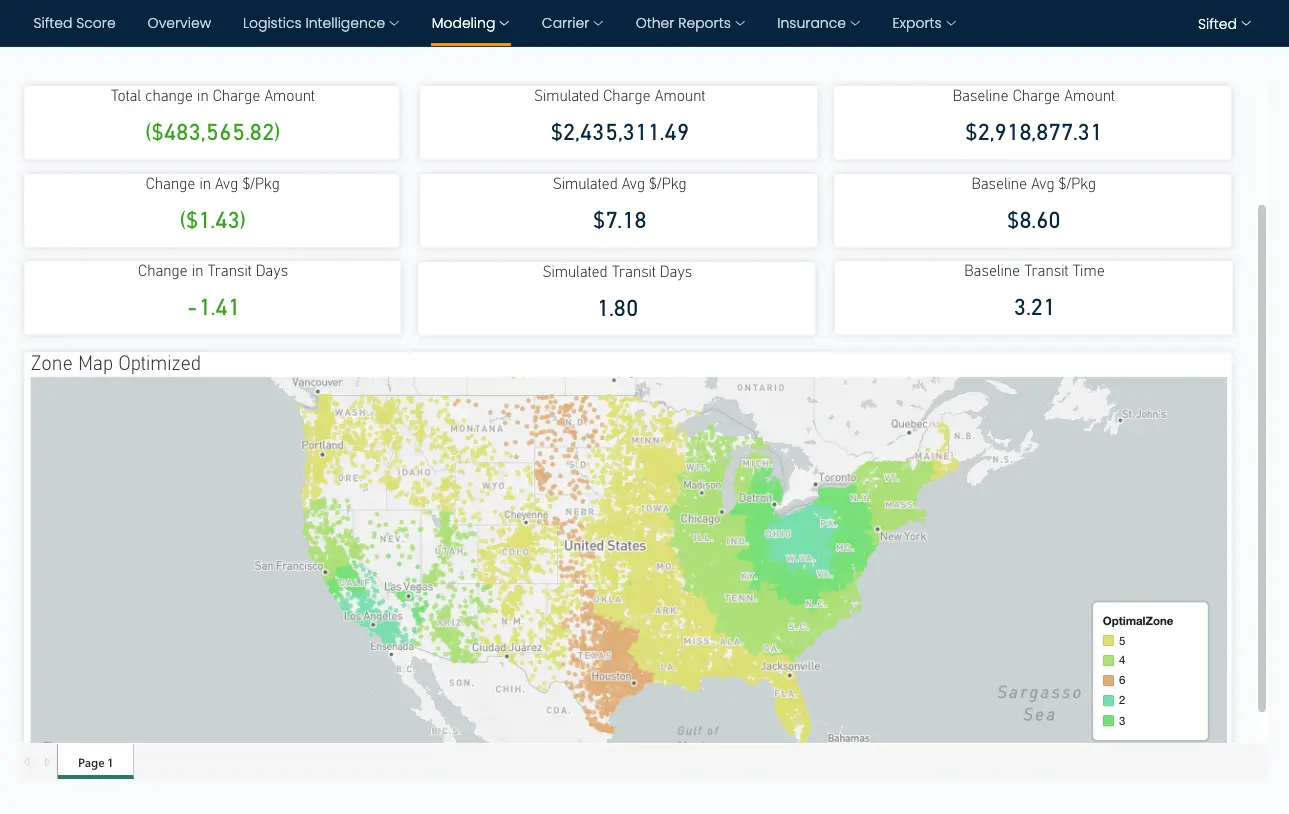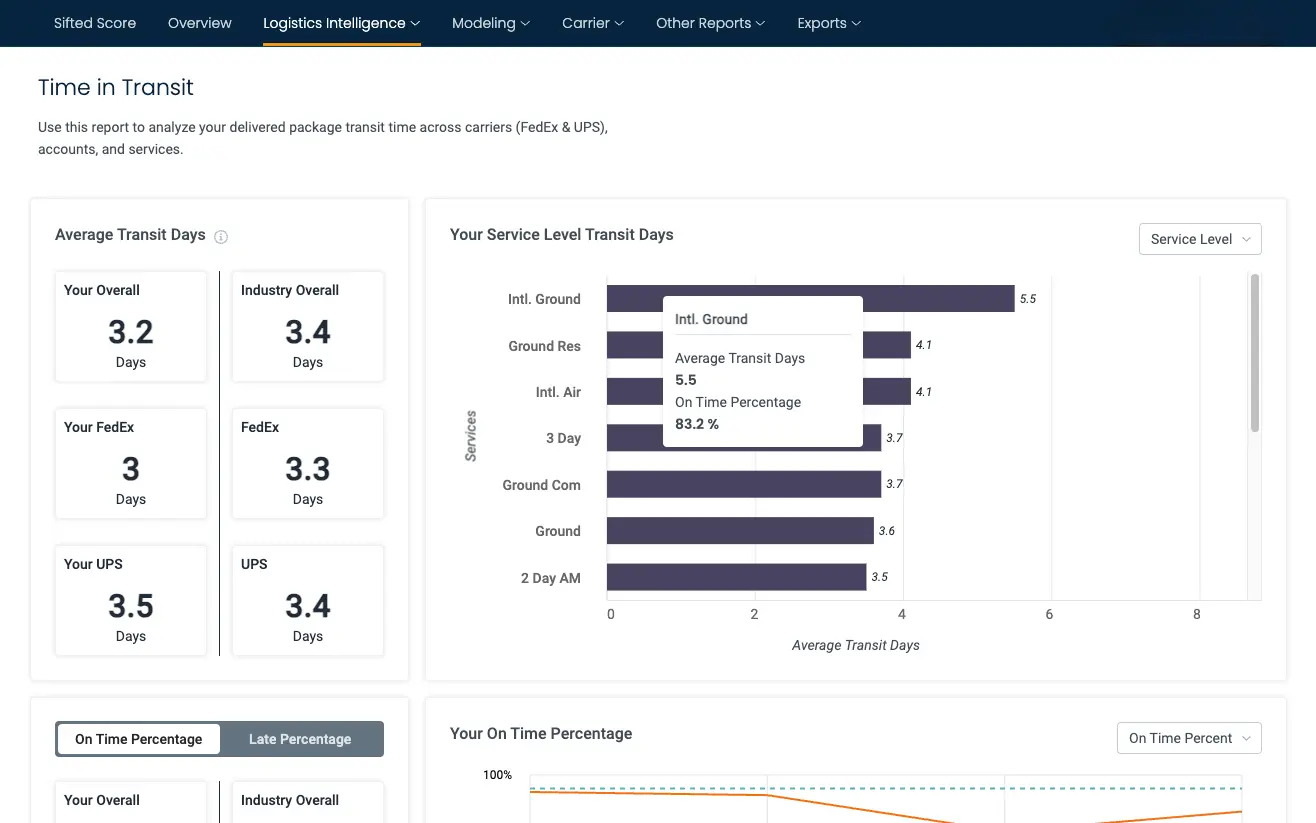Carrier Diversification allows businesses to:
However, with these benefits come a myriad of operational challenges. Therefore it’s crucial for businesses to have a comprehensive strategy for assessing the efficiency, reliability, and cost-effectiveness of their chosen carriers.
In this blog, we will explore the key factors to consider when evaluating carrier performance and provide actionable insights to help you optimize your logistics operations.
Key Metrics for Evaluating Carrier Performance
1. Network Coverage and Reach To Maximize Connectivity
Evaluating a carrier’s network coverage and ability to access less populated locations helps determine its ability to maintain service quality, cost-effectiveness, and reliability across diverse locations.
Key factors to consider include:
2. Delivery Lead Time
Delivery lead time is the total time taken from the moment an order is placed until the package is delivered to the customer. This metric encompasses all stages of the order fulfillment process, including order processing, picking, packing, transportation, and final delivery.
Delivery lead time is a critical performance indicator in supply chain and logistics management, as it directly impacts customer satisfaction and operational efficiency.
Key components of delivery lead time include:
3. Service Quality and Customer Support
Evaluating a carrier’s performance goes beyond just on-time delivery. It also involves assessing the overall quality of service and the effectiveness of customer support. Key aspects to consider include:
Customer service response times
Resolution Efficiency
Customer Satisfaction Scores
NPS or Net Promoter Score is an indicator of customer loyalty. It measures how likely customers are to recommend a carrier to others. A high NPS indicates strong customer loyalty, which suggests reliable service and a positive customer experience.
To find a carrier’s NPS score, you can refer to industry reports, third-party benchmarking services, and customer review platforms. Websites like Gartner, Forrester Research, and CustomerGauge often provide detailed NPS scores and analyses for various carriers.
Additionally, logistics and shipping industry reviews on Trustpilot and Glassdoor can offer insights into customer satisfaction and loyalty metrics for specific carriers.
4. Cost Efficiency
Methods for Evaluating Shipping Carrier Performance
Data Collection and Analysis
To gather meaningful carrier insights, it’s essential to collect various types of data, including performance logs that track delivery times, accuracy, and incidence of delays or damages, as well as customer feedback that provides direct insights into customer satisfaction and service quality.
Utilizing tools such as logistics intelligence platforms, transportation management systems (TMS), customer relationship management (CRM) software, and advanced analytics platforms can streamline the data collection process and facilitate in-depth analyses. To ensure optimal data collection and analysis, a parcel shipper should ask the following questions:
By addressing these questions, a parcel shipper can develop a robust data collection and analysis strategy that provides actionable insights into carrier performance. This helps optimize logistics operations and enhance overall service quality.
Ensuring Data Privacy and Security:
Challenges in Carrier Diversification and Multi-Carrier Operations
Managing Multiple Carriers Comes With Complex Moving Parts: Coordinating multiple carriers requires robust systems and processes to manage different contracts, service levels, and operational workflows. Ensuring that all carriers operate seamlessly together can be challenging. However, if you’re looking for a platform that can do just that, check this out.
Data Integration and Normalization: Integrating data from multiple carriers into a single system can be complex due to varying data formats, protocols, and standards. But, it’s possible, and the ability to manage all your carriers in one place is a game-changer for cost management and reporting.
Inconsistent Service Quality: Different carriers may offer varying levels of service quality. Managing and maintaining consistent performance across multiple carriers directly impacts overall customer satisfaction.
Cost Management: Balancing cost efficiency while using multiple carriers can be complex. Negotiating favorable rates with each carrier and managing the overall transportation budget requires careful planning and constant monitoring.
Risk of Service Disruptions: Relying on multiple carriers can introduce risks such as miscommunication, delays, or failures in service coordination. Mitigating these risks requires robust contingency planning and proactive management.
Managing Multiple Carriers Comes With Complex Moving Parts: Coordinating multiple carriers requires robust systems and processes to manage different contracts, service levels, and operational workflows. Ensuring that all carriers operate seamlessly together can be challenging. However, if you’re looking for a platform that can do just that, check this out.
Data Integration and Normalization: Integrating data from multiple carriers into a single system can be complex due to varying data formats, protocols, and standards. But, it’s possible, and the ability to manage all your carriers in one place is a game-changer for cost management and reporting.
Inconsistent Service Quality: Different carriers may offer varying levels of service quality. Managing and maintaining consistent performance across multiple carriers directly impacts overall customer satisfaction.
Cost Management: Balancing cost efficiency while using multiple carriers can be complex. Negotiating favorable rates with each carrier and managing the overall transportation budget requires careful planning and constant monitoring.
Risk of Service Disruptions: Relying on multiple carriers can introduce risks such as miscommunication, delays, or failures in service coordination. Mitigating these risks requires robust contingency planning and proactive management.
Implementing a Carrier Management System
Features of an effective multi-carrier management system:
1. Centralized Dashboard
A robust multi-carrier management system provides a unified interface to manage multiple carriers and allow users to monitor and control all shipping activities from a single platform. It enables re-rates, cost savings and visibility.
2. Optimization Dashboards
Optimization dashboards allow shippers to model different “what-if” scenarios before making the big investment. By using advanced predictive analytics, these tools ensure that businesses can optimize their logistics operations, reduce shipping costs, and/or improve delivery times, ultimately enhancing overall customer satisfaction and operational efficiency.
3. Shipment Planning and Network Optimization
Network Optimization tools like Sifted can help shippers optimize their distribution network by identifying where to add regional carriers or new distribution centers to reduce zones, transit times, and costs.
The platform analyzes the current distribution patterns to identify high-cost zones. These zones are typically areas where shipping costs and transit times are disproportionately high due to the distance from the shipper’s current distribution centers.
4. Performance Analytics and Reporting
A comprehensive multi-carrier management system generates in-depth reports and analytics on various aspects of carrier performance, providing actionable insights that drive data-driven decision-making. For example, it can highlight trends and identify carriers that consistently meet or exceed delivery promises.
Detailed cost analysis reports break down shipment expenses, allowing businesses to pinpoint cost-saving opportunities by comparing the performance and pricing of different carriers. These analytics are presented in customizable dashboards and automated reports, enabling logistics managers to monitor performance easily and identify areas for improvement.
5. Scalability and Flexibility
True scalability in a multi-carrier management system means the ability to adapt to the growing needs of a business without requiring additional human resources. Such systems are designed to autonomously handle increasing loads of shipment data, whether that involves scaling operations up during peak periods or down during quieter times, ensuring seamless efficiency and cost-effectiveness.
For example, during peak seasons like holidays or major sales events, the system can automatically process a surge in shipment data and manage increased interactions with various carriers. This means that even as shipment data volumes spike, the system maintains high performance and accuracy, ensuring that all shipping information is up-to-date and easily accessible.
Build a Scalable, Risk-Avert, Adaptable Logistics Network
Discover a better way to track and evaluate your shipping performance across diverse networks. Get in touch to find out your overall shipping health and how you can drive continuous parcel cost savings.















